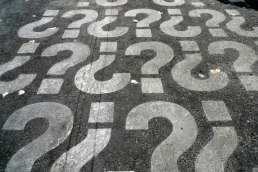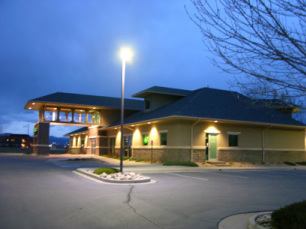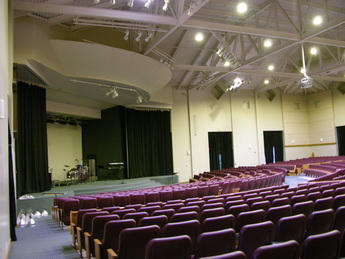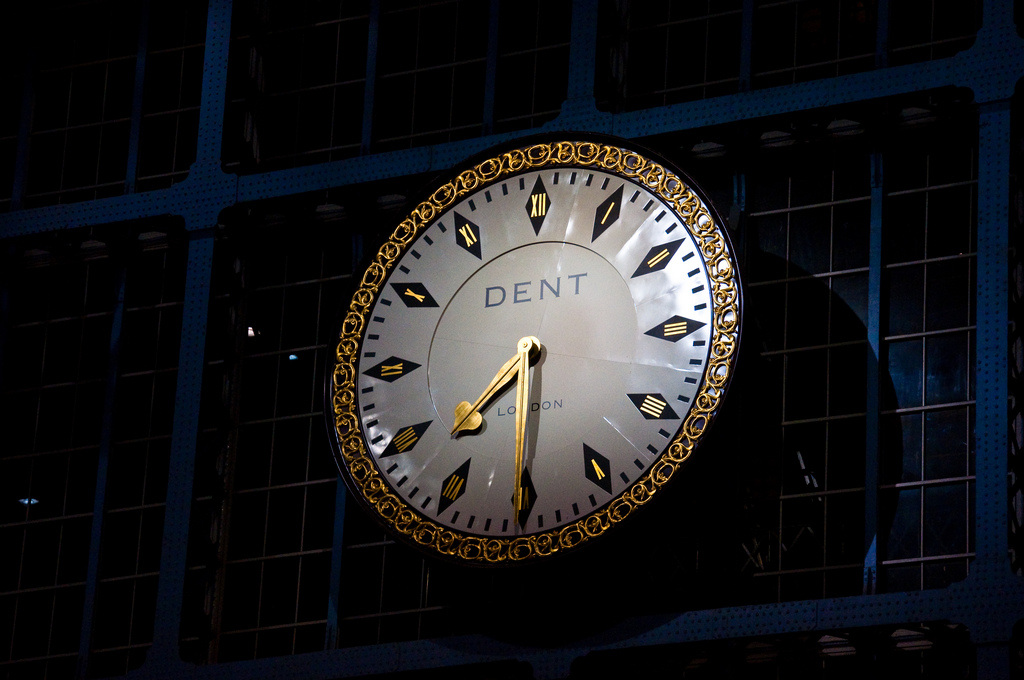- Current lighting is consuming a very large amount of energy
- Current lighting is hard to access for maintenance
- Current lights require constant changing (large number of lights, so always some going bad)
- Current lighting creates excess heat in an area that needs to stay cool
- The area being lit regularly experiences vibrations or lights need to be durable
- Areas surrounding the area being lit should not be lit
- The area needs to be Dark Sky compliant
- Lights in this area are turned off and on regularly
- Instant full intensity lighting is desirable
- Environmentally friendly disposal is not easily achieved
|
As everyone evaluates newer technologies like LED lighting, a common question comes-up - is it worth it for my situation? Here are some signs that a situation warrants a closer look at LED lighting...
0 Comments
Simply put, the 50,000+ hour lifespan of high quality LED lights means that the initial cost of a light (bulb) is a smaller percentage of the Total Lighting Cost or "TLC" (the total cost of providing lighting to a space.) But, there is actually more to it.
(Editor's note: Today's post is a guest post from a tech writer, Hazel Tamano. The original article can be found at the end of the article.)
While most people would agree that "Going Green" is good for the environment and can even save money, many people don't realize just how much value can be created. For example have you ever considered how much changing lights to efficient LED lighting can add to your bottom line? Or, take it a step further. If that bottom line is associated with a property, upgrading to energy efficiency lighting not only reduces energy costs and increases profits, but also has a direct impact on the value of the property.
A common (mis)perception associated with LED lighting is that it costs more than traditional incandescent lighting. However, as you'll see in the post below, this might only be a matter of perception, depending in particular on what costs one focuses upon and the timeframe being examined...
 I was speaking with a potential client recently, and it occurred to me that there really are an awful lot of questions out there about LED lighting and what makes it better than alternative lighting solutions. Particularly because there are a lot of claims being made about terrific savings gained by using LED lights, which often use different terminology than has traditionally been associated with lighting, the whole situation can be confusing, frustrating and perhaps a little daunting as one tries to wade through the facts and hype, or perhaps even figure out where to start. This often makes people very wary of the information being shared with them, and, as this gentlemen suggested, it can even feel like someone is trying to pull a fast one, so I thought I'd see if I can de-mystify why a seemingly straight forward question may not be so straight forward. After a brief back and forth, he asked me "Why aren't you just giving me the number I'm asking for?" I was a little shocked, as I was trying to answer his question, but, as I reflect back, I am better understanding why my accountant and lawyer so often answer "It depends." This is because what seems like a straight forward question to the person asking the question can have a different answer depending on the circumstances and, because the asker might not be aware of what drives these differences, he/she might not even realize the answer they are receiving is being skewed because of the question asked. Because there really are many variables that need to be considered before an accurate answer can be given, it is better if these are clarified before a factually correct, but potentially misleading answer is given. So, what are some of these variables that can impact a seemingly simple question like "How much savings can I get by replacing my existing lights with LED lights?" Here are a few that I'll list, then review each one to explain a little about why this can impact the answer: (1) What type of lights and what type of technology is being replaced? (2) What is the area being lit, so we can understand what type of lighting needs to be provided? (3) What is the height of the light, so we can tell what intensity is needed? (4) What is the color of the current lighting, and is that the color that you want to light this space? (5) Do you want to consider additional technology such as automatic dimming that can further increase your savings? (6) What is the cost of the energy being used to power the light? So let's review why each of these is potentially significant... (1) What type of lights and what type of technology is being replaced? In order to calculate with any sort of accuracy how much will be saved, one needs to consider what the characteristics are for the existing lighting. For example, if you have a parking lot that currently has 400 watt metal halide lights being used to light it, the amount saved by replacing these with 75 watt LED lights will be at least 81.25%, all else being equal ([400-75]/400=81.25). However, if the current lights are fluorescent lights that are drawing 136 watts and these are being replaced by LED Tubes drawing 68 watts, only 50% of the energy being used is saved ([136-68]/136=50). As you can see, even though both are significant, even on a relative (%) basis, there is a wide difference that depends on the light being replaced. Further, each type of light has a different life expectancy, so the difference between the existing light's life expectancy and the LED's life expectancy can also make a big difference in terms of how much will be saved over the life of the LED light. Therefore, how long the existing light is expected to last can also make a difference, both in terms of the number of times the light might need to be replaced, as well as the associated costs, including both parts and labor. (2) What is the area being lit, so we can understand what type of lighting needs to be provided? Another area that is critical is what you are trying to accomplish with the lighting. Is the goal to provide maximum lighting for the space, so a replacement light should be as bright or brighter than what was previously installed, or does the area just need to be lit to safety standards, with maximizing energy efficiency being most important? Depending on the answer to this question, using the parking lot example from above, it is possible that an LED retrofit could be installed that draws anywhere from 38 watts to 120 watts. This again, would change the answer of how much savings was going to be provided, even if you keep the light being replaced constant. ([400-38=362]/400 = 90.5% savings vs. [400-120=280]/400 = 70% savings) (3) What is the height of the light, so we can tell what intensity is needed? This may seem a little obvious, however, it is surprising how often the current light installed is not appropriate for the situation. Even though the height is presumably constant between the old and new light, the amount of energy saved could vary depending on if a different light was chosen to more appropriately light the space. This can also vary based on other characteristics, such as whether the directional characteristic of LED lighting can be leveraged to reduce the amount of overall brightness that is needed because the light is actually directed where it is needed rather than having more than half of it dispersed in other directions. (4) What is the color of the current lighting, and is that the color that you want to light this space? Another aspect of lighting that is important to its overall effectiveness is what color the light is perceived to be, and whether this is considered appropriate for the application. When answering the question "How much will I save?," the color of the lights is not always a large factor, but can make a difference. This is primarily for two reasons. First, the efficiency of the light being produced does change somewhat depending on the light color being emitted. Second, if a brighter light is desired, but this is primarily because the current light is actually just too yellow because of deterioration of the light quality, maybe a brighter light really isn't needed. This could mean that the desired lighting might be able to be provided through a cleaner (less yellow) colored light that is actually drawing less energy. (5) Do you want to consider additional technology such as automatic dimming that can further increase your savings? So far, we have been focused on simply replacing an older lighting technology with more efficient LED lighting. However, there are other things that can be done which could significantly increase the amount of savings achieved, while only slightly increasing the cost. For example, Leading Edge Designs has patented technology that, if chosen, enables all of our lights to be dimmed (smoothly - no flicker) down to 5% of their brightness, while also reducing energy consumption down the same amount. This can be either manual or automated, and can sometimes also be combined with other technologies such as automated sensors that detect motion or ambient light. The end result of this can drastically increase the amount of energy saved, particularly if a space is accessed infrequently, but needs bright lighting when it is accessed. (6) What is the cost of the energy being used to power the light? Finally, a last point, even though it doesn't change the % of savings, the absolute amount of money being saved can vary dramatically simply because of the cost of energy at a given location. Another similar factor that would also impact the absolute dollar figure of savings would be how often and for what length of time a light is going to be used. So, these are just few of the questions that need to be addressed before an accurate answer can be given to the question "How much can I save?" This is one of the reasons that Leading Edge Designs operates using a business model focused on educating potential customers and trying to understand their lighting needs, then helping them to choose the best solution. This offers the opportunity to discuss factors like those above and gain a true understanding of what might impact the amount of savings realized and, hopefully, ending-up with a solution that provides exactly the light you need for years to come... So next time a lighting professional begins an answer with "it depends," allow them an opportunity to explain - it really might depend...  There are two basic ways that installing LED lights can save you money. The first is pretty obvious, the second one may not be quite as obvious. First, LED lights are much more efficient than conventional lighting. In order to discuss this in more detail, it is first important to understand some of the terminology used to describe the efficiency and output of a light. I will discuss a few terms here, but if you would like to learn more, you can refer to this LED terminology page. Most people are familiar with common power usage terms (i.e. Watts) that are used to describe the amount of energy consumed by an incandescent light bulb (i.e. 60w or 100w bulb). However, what is actually important when comparing a new technology like LEDs is the quantity of light being emitted because the amount of power drawn (Watts) can be dramatically different between two products that produce the same quantity of light. A common measure of light output is Lumens, and a standard comparison would be that a 60w tungsten (traditional) bulb would output around 600-650 Lumens (for more, see this Wikipedia definition). So, how much energy can be saved? I said earlier that LED lights are much more efficient. One way to compare this is my creating a ratio of the two terms just described - Lumens and Watts - by asking the question "How many Lumens are output for each Watt of energy consumed to generate that light?" For example, the earlier bulb I mentioned consumed 60 Watts of energy and produced approximately 600 Lumens of output. This could be described as 600 Lumens from 60 Watts, or the more standard way to describe this would be 10 Lumens per 1 Watt or 10 lm/w. As a comparison, many LED lights generate upwards of 75-100 or more Lumens per Watt, so, as you can see, LEDs are approximately 7-10x more efficient than this common incandescent bulb. Further, the technology is improving, so this efficiency is increasing every year. Second, LED lights can save you significant cost on maintenance and upkeep. This is a broad statement and the exact amount of savings will depend on how each individual decides to maintain his or her lights. However, some basic facts are true. For example, LED lights are rated to last as long as 100,000 hours as compared to 7,500 - 20,000 for many traditional lights. Because of this, they will need to be replaced approximately once for every 5-10 changes of the traditional lights. Each change has a cost associated with it that includes the light itself, but often additional hardware such as ballasts, as well as labor, which can be significant, particularly if special equipment such as a ladder truck are required. Other ways that installing LED light technology can save you money include reducing recycle / disposal fees (because they last so much longer), potential for government and/or utility rebates, and fewer lights because of increased efficiency of lighting. For examples of different installations, go to this gallery. |
Archives
August 2014
Categories
All
Recent Posts
LED lights cost more, or do they? Well, it depends How can 10,000 lumens be brighter than 20,000 lumens? What are some of the health benefits of LED lights? How do LED lights save you money? Why do LED lights use less energy? AuthorBill Motsko is an Executive supporting Leading Edge Designs (LED). Our team has been providing lighting solutions and helping our clients overcome lights challenges for more than 9 years with a cost-effective, custom approach focused on understanding your needs and providing the most efficient solution. We're passionate about helping to reduce energy costs, while shedding a little light on LED / solid state lighting... |


 RSS Feed
RSS Feed
